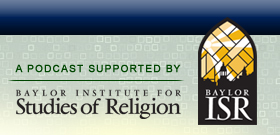

|
Rajdeep Singh on American Sikhs and Religious Liberty  Date: April 26th, 2015
 Sikh-Americans have been on the forefront of some very important religious liberty cases in recent years. Rajdeep Singh, Director of Law and Policy at the Sikh Coalition, explains what the Sikh religion is, who are the Sikh-Americans, and how they have helped to shape and define our notions of religious liberty. This is a valuable discussion of a faith tradition that not many Americans are familiar with. Our conversation begins with Mr. Singh providing a historical background to Sikhism. This history takes us back over 500 years to the Punjab region of what is now northern India. The religion developed over the course of two centuries and nine critical leaders known as “gurus.” Rajdeep carefully explains the various terms associated with his faith along the way, providing a clear understanding of terminology for those unfamiliar with the faith (such at your podcast host). He also notes that the history of Sikhism, a monotheistic religion that views all humans as equal, is replete with the promotion of religious tolerance and freedom. Gurus in the 6th through 9th centuries advocated not only for their adherents’ liberties, but for the freedoms of Hindus and others as well. Sikhs were also instrumental in India’s struggle for independence from Britain and often took the brunt of British retaliation. This history helps situate our modern understanding of Sikhs being strong proponents of religious freedom in America (and elsewhere). We also discuss the migration and demographics of Sikhs in the United States over the past half century or so. We next cover the various rituals and articles of faith that are important to the Sikh faith. Rajdeep tells the story of Guru Gobind Singh who, in the late 17th century, inaugurated many of the customs we come to associate with Sikhs today. He defines and explains the importance of the “five k’s” of the faith: kesh (uncut hair), kanga (wooden comb), kara (steel bracelet), kachera (cotton underwear), and kirpan (holy sword). We also discuss the highly visible and demarcating turban (dastaar), which often leads non-Sikh Americans to confuse Sikhs with Muslims. These articles of faith are not only important for our understanding of Sikh spirituality, but they also play an important role in a number of religious liberty cases that we discuss later. We then move on to discuss the experience of Sikhs in the United States, with Rajdeep noting that Sikhs have faced difficulties with hate crimes, bullying in schools, and discrimination in the workplace. This leads us to discuss an important piece of legislation that Mr. Singh was instrumental in fostering in the state of Oregon. He details the history of the case, which dates back to 19th century efforts to ban religious garb in public schools as part of an effort to deny Catholic instructors access educational positions. In the 198s, a court case involving a convert to Sikhism wearing the traditional turban while employed as a public school teacher — Cooper v Eugene School District — upheld this ban. However, the Sikh Coalition was able to convince the Oregon state legislature to repeal the older law in 2010. This opens a discussion of the difficult line that regulators have to walk when dealing with issues such as workplace safety and allowing religious freedom for various articles of clothing and practices. We discuss cases of hard hats on construction sites and the need to have tightly fitting gas masks in some work environments, both of which have created challenges for Sikh employment in the past. Rajdeep explains how technology has made some of these issues moot (e.g., better designed masks) and how other reasonable accommodations can be made. This discussion is not only relevant for Sikhs, but for people of other faiths as well. We conclude with some of Mr. Singh’s thoughts about the future of Sikhs in America. Like many of our guests, Rajdeep has a great sense of optimism about the future based upon the tenets of his faith, but he is also cautious and concerned about the future of religious liberty. Recorded: April 8, 2015. RELATED LINKS Rajdeep Singh’s bio at the Sikh Coalition. Religious Freedom in America: Constitutional Roots and Contemporary Challenges, edited by Allen Hertzke (where Rajdeep has a chapter). Cooper v Eugene School District (the 1986 court case involving a Sikh in Oregon). Oregon House Bill 3686 (the 2010 law reversing religious clothing restrictions in Oregon). RELATED PODCASTS Allen Hertzke on Religious Liberty. Brian Grim on Religious Liberty and Business. Religious Freedom and Social Flourishing: A Panel Discussion. Carmel Chiswick on the Costs of Being Jewish in America.
3 Responses to “Rajdeep Singh on American Sikhs and Religious Liberty” |
 Search The Podcast
To search the podcast, type a term and click the Search button.
  Browse Podcast Categories
Select a category below to browse the podcast:
   |















[…] Rajdeep Singh on American Sikhs and Religious Liberty. […]
[…] Rajdeep Singh on American Sikhs and Religious Liberty. […]
[…] Rajdeep Singh on American Sikhs and Religious Liberty. […]